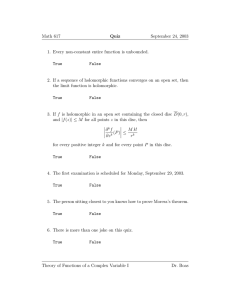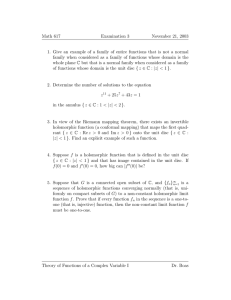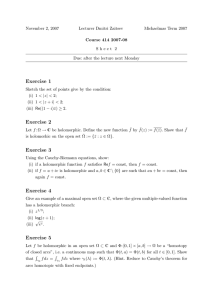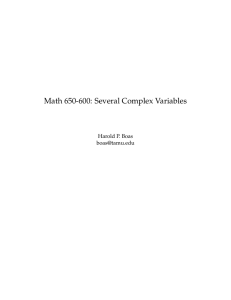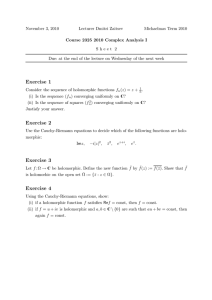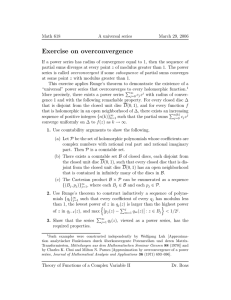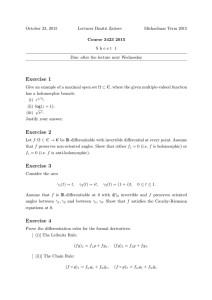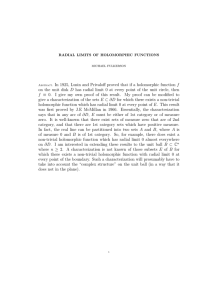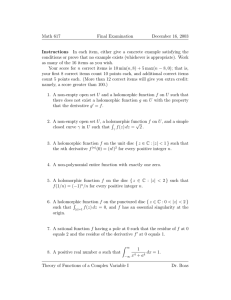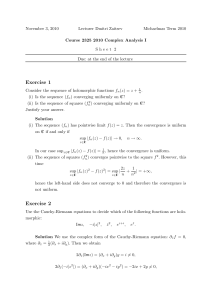Professor Stephen Gardiner
advertisement
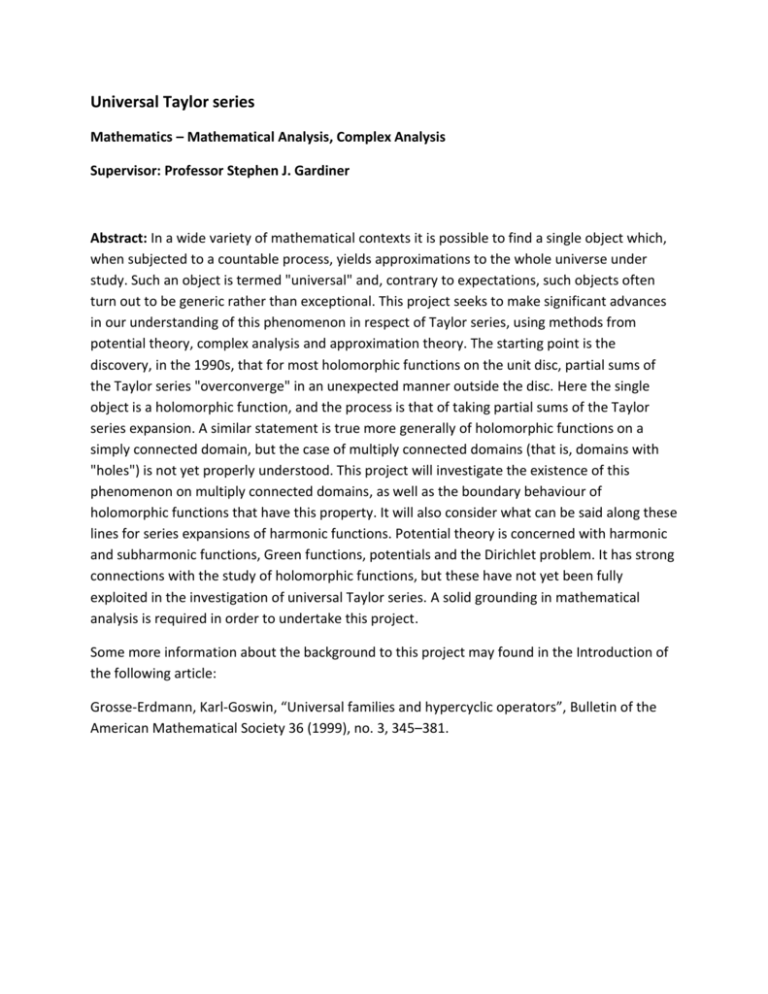
Universal Taylor series Mathematics – Mathematical Analysis, Complex Analysis Supervisor: Professor Stephen J. Gardiner Abstract: In a wide variety of mathematical contexts it is possible to find a single object which, when subjected to a countable process, yields approximations to the whole universe under study. Such an object is termed "universal" and, contrary to expectations, such objects often turn out to be generic rather than exceptional. This project seeks to make significant advances in our understanding of this phenomenon in respect of Taylor series, using methods from potential theory, complex analysis and approximation theory. The starting point is the discovery, in the 1990s, that for most holomorphic functions on the unit disc, partial sums of the Taylor series "overconverge" in an unexpected manner outside the disc. Here the single object is a holomorphic function, and the process is that of taking partial sums of the Taylor series expansion. A similar statement is true more generally of holomorphic functions on a simply connected domain, but the case of multiply connected domains (that is, domains with "holes") is not yet properly understood. This project will investigate the existence of this phenomenon on multiply connected domains, as well as the boundary behaviour of holomorphic functions that have this property. It will also consider what can be said along these lines for series expansions of harmonic functions. Potential theory is concerned with harmonic and subharmonic functions, Green functions, potentials and the Dirichlet problem. It has strong connections with the study of holomorphic functions, but these have not yet been fully exploited in the investigation of universal Taylor series. A solid grounding in mathematical analysis is required in order to undertake this project. Some more information about the background to this project may found in the Introduction of the following article: Grosse-Erdmann, Karl-Goswin, “Universal families and hypercyclic operators”, Bulletin of the American Mathematical Society 36 (1999), no. 3, 345–381.
